Mining is the process of creating new coins and validating new transactions. Anytime someone spends crypto currency, the blockchain ledger must be updated. Unfortunately, digital platforms are simple to manipulate, so only verified miners can update transactions on the public blockchain using a currency’s distributed ledger. Because of this, miners now have the additional duty of protecting the network against double-spending. This method is known as proof-of-work.
There are different types of mining, such as CPU, GPU and Asics. CPU mining works by using the CPU to solve mathematical equations to create transactions on the blockchain. Still, with the blockchain growing so large, miners usually join a mining pool that combines the computational power of every CPU in the pool. The mining pool solves equations faster, and pool members share the reward.
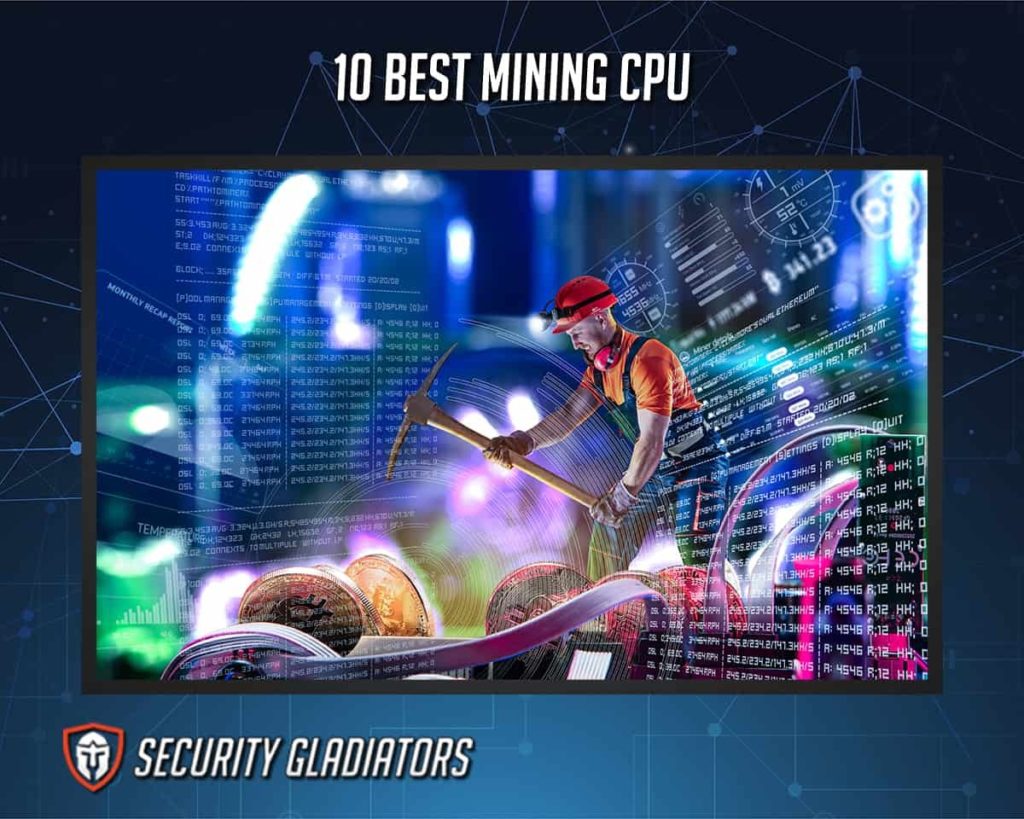
Here are the 10 best CPUs for mining in 2023, with the top three listed below.
- AMD Ryzen Threadripper 3970X (Best Overall)
- AMD Ryzen 9 3950X (Best Value)
- AMD Ryzen 5 3600X (Best Budget Pick)
Table of Contents
1. AMD Ryzen Threadripper 3970X (Best Overall)
The AMD Threadripper 3970X comes with 32 cores and 64 threads. This CPU has a base clock of 3.7GHz, which can be boosted to 4.5GHz, and an L3 cache with 128MB. The officially supported memory speed is 3,200MHz. However, by overclocking the CPU, higher speeds are possible. The 3970X uses a PCIe 4.0 connection. Features include support for Windows and Ubuntu and the AMD “Zen” core architecture.
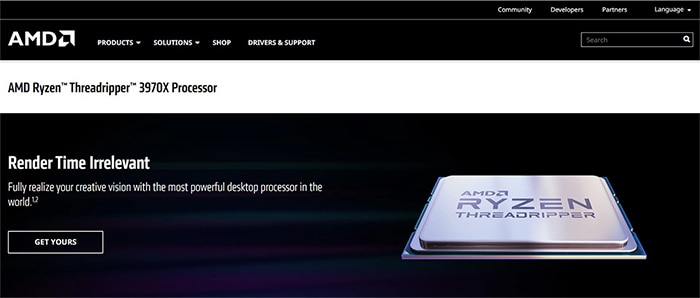
According to Hashrates.com, the Threadripper 3970X has a hash rate of 19.9kH/s and can generate $45 monthly. The Threadripper 3970X has a thermal power design of 280 watts. Productivity tests show that the 3970X uses more power when loading fewer cores. With only one core loaded, the power consumption tops at 13 watts. But when fully loaded, the power consumption averages to about 6 watts per core.
| Term | AMD Ryzen Threadripper 3970X |
| Cores | 32 |
| Threads | 64 |
| Price | $3443 |
2. AMD Ryzen 9 3950X (Best Value)
AMD Ryzen 9 3950x is the best budget pick. The processor is a 16-core, 32-thread CPU with a 64MB L3 cache. The processor uses a PCIe 4.0 connection and supports DDR4 memory. One of the more exciting features of the 3950X is the hardware virtualization, which significantly enhances the performance of virtual machines.
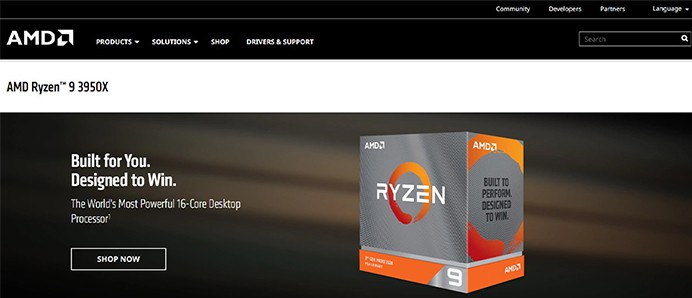
The Ryzen 9 3950X has a hash rate of 13kH/s and generates average monthly revenue of $29. The Ryzen 3950X has a thermal design power of 105 watts. Productivity tests place the power consumption at 144 watts when all cores are loaded. When two cores are loaded, energy consumption comes to 18 watt per core but ranges between 6.9 and 7.6 watts when all cores are loaded.
| Term | AMD Ryzen 9 3950X |
| Cores | 16 |
| Threads | 32 |
| Price | $870 |
3. AMD Ryzen 5 3600X (Best Budget Pick)
The AMD Ryzen 5 3600X is the best value mining CPU thanks to an affordable price range and outstanding performance. The 3600X has six cores and 12 threads, making the chip quick enough to compete in single-threaded tasks.
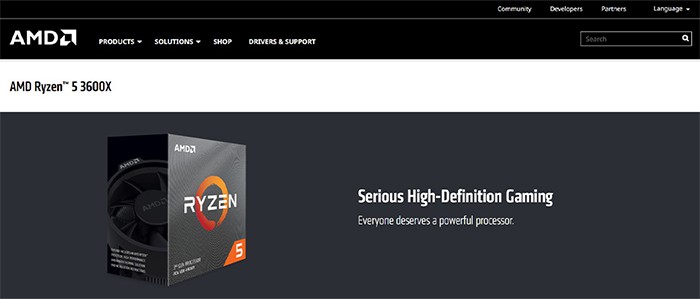
The AMD Ryzen 5 3600X is produced using a 7nm technology and has AMD’s Zen 2 architecture. Additionally, the 3600X includes a 32MB L3 cache memory as well as PCIe 4.0 capability, which significantly increases performance for PCIe devices like graphics cards and solid-state drives. The Ryzen 5 3600X has a hash rate of 5.58kH/s and generates average monthly revenue of $12.62. The processor uses very little power and, even while under heavy loads, stays under 80 watts, which is far below the TDP of 95 watts.
| Term | AMD Ryzen 5 3600X |
| Cores | 6 |
| Threads | 12 |
| Price | $154.99 |
4. Intel Core i9-10900X
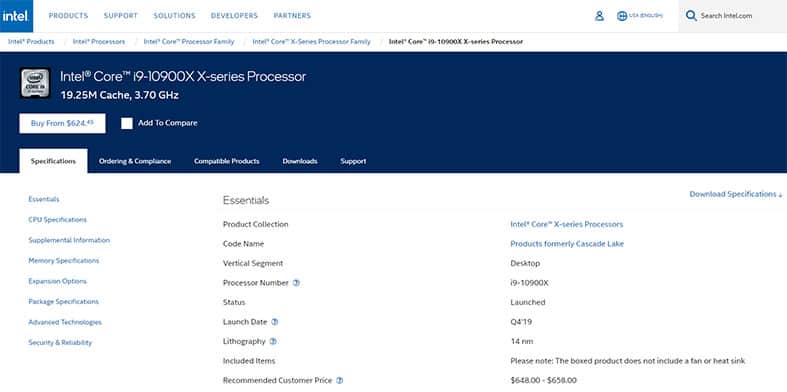
The Intel Core i9-10900X is an ideal processor for cryptocurrency mining. The i9-10900X has 10 cores and 20 threads, a base clock of 3.70GHz and a boost clock of 4.5GHz. Features include support for 72 PCIe lanes, 256 GB DDR4 RAM and Intel’s Wi-Fi 6 technology. The 10800X may not deliver spectacular hash rates as some on this list, but this CPU is a strong processor for powering mining rigs. According to Hashrates, the i9-10900X gets 5.48 kh/s and a revenue of $12.41 (for mining Monero). The CPU also offers solid compatibility with the top mining motherboards available today. The power consumption reaches 134 watts at base speed and 158 watts when overclocked. Although the Intel core i9-10900X performs relatively well in PassMark tests, the Ryzen CPUs are better and less expensive.
| Term | Intel Core i9-10900X |
| Cores | 10 |
| Threads | 20 |
| Price | $700 |
5. AMD Ryzen Threadripper 3960X
The Ryzen 3960X is an excellent performance CPU for mining cryptocurrencies. The 3960X comes with 24 cores and 48 threads for carrying out jobs superfast. This Threadripper 3960X also comes with 88 total four lanes PCIe and 140MB of combined cache (L1, L2, L3). The 3960X has a 128MB L3 cache, operates a base clock of 3.8GHz, which can be increased up to 4.5GHz and supports a quad-channel DDR4.
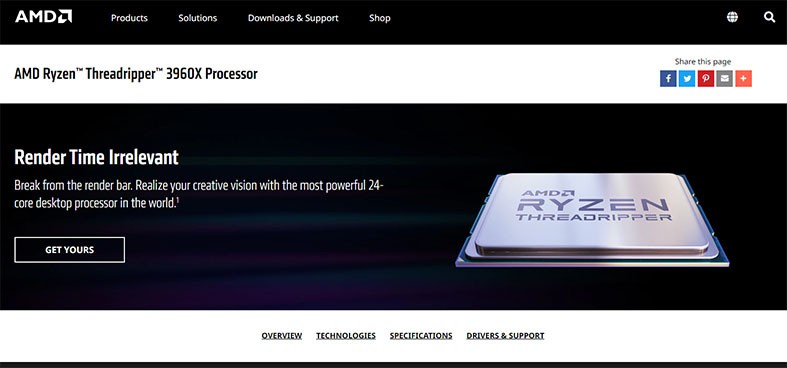
The AMD Ryzen Threadripper 3960X is built on a 7 nm production node. You may freely adjust the unlocked multiplier. The unlocked multiplier can be freely adjusted, which helps to simplify overclocking. The Ryzen 3960X has a hash rate of 11.6kH/s and generates monthly revenue of about $26. This CPU is perfect for crypto mining for having 24 cores. Like the 3970X, the TDP for the Ryzen 3960X is 280 watts. Productivity tests show that the core consumes 13.5 watts when a single core is active and slowly drops to around 10 watts per core when sixteen cores are active.
| Term | AMD Ryzen Threadripper 3960X |
| Cores | 24 |
| Threads | 48 |
| Price | $1989 |
6. AMD Ryzen 3 3100
The best overall mining CPU for 2023 is the Ryzen 3 3100. The 3100 is an affordable, low-energy CPU ideal for first-time miners. With four cores and eight threads, the AMD 3100 is more than a challenge for Intel’s dual-core CPU.
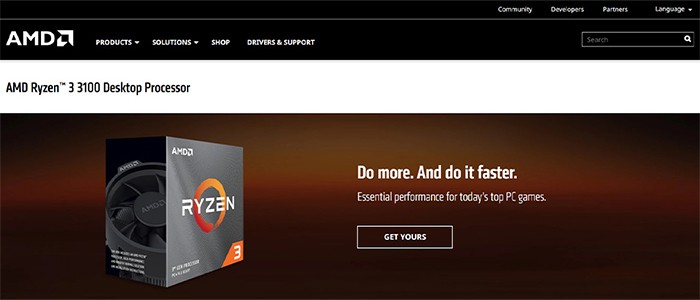
The Ryzen 3 3100 is produced using a 7nm technology, with an L3 cache memory of 16MB. The base clock rate is 3.6GHz and the boost clock rate is 3.9GHz. Connectivity is established via a PCIe 4.0 standard. The Ryzen 3100 has a hash rate of 2.27kh/s and generates $5.13 monthly. The TDP (thermal design power) for the 3100 is 65 watts. However, during tests, the peak power consumption hit 62 watts, which is why the Ryzen 3 3100 is very efficient for mining.
| Term | AMD Ryzen 3 3100 |
| Cores | 4 |
| Threads | 8 |
| Price | $149 |
7. Intel Core i5-7600K
The i5-7600K is the fastest i5 core chip available. The chip includes a quad-core, non-hyper-threaded design. Intel Core i5-7600K is built on a 14nm Plus process node for enhanced performance. The base and boost clock rates are listed as 3.8 GHz and 4.2 GHz, respectively. 6 MB of L3 cache are included in the processor, which has a 91W TDP. Other features include the HD 630 chipset.
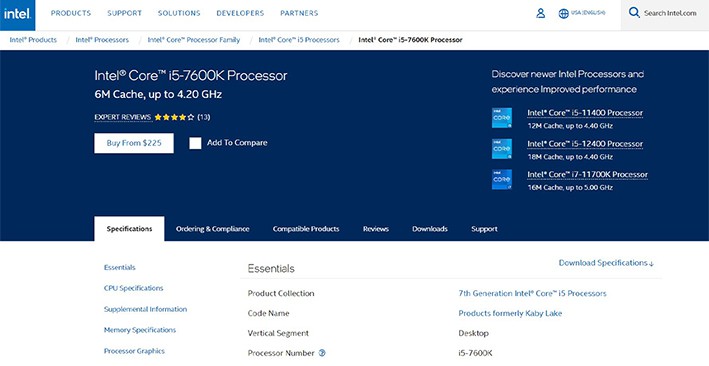
Hashrates put the hash rate at 1.31kh/s and the revenue generation at $2.96/month. The base speed and overclock speed make the 7600k perfect for mining. When idle, the i5-7600K barely uses any power, with the load rating averaging 126.3 watts. Given the 5.1GHz frequency, the power draw after the overclock is still under 150 watts.
| Term | Intel Core i5-7600K |
| Cores | 4 |
| Price | $180 |
8. Intel Pentium G4560
The Intel Pentium G4560 is a low-budget CPU that is easy to run and has a quick ROI. The CPU has a base frequency clock of 3.50GHz but no boost clocks. The Intel Pentium G4560 comes with a twin-core processor with Hyper-Threading Technology. This is the first time Intel has made the technology available on Pentium series processors with four threads.
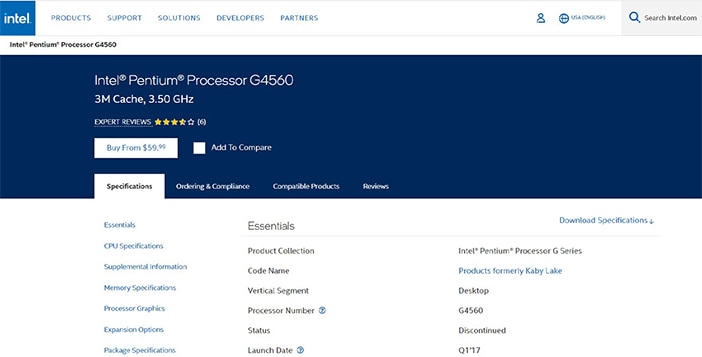
The chip features a 54W TDP and a 3MB L3 cache. The newest HD Graphics 610, clocked at 1150MHz, is also included in the processor. Hashrates puts the Intel Pentium G4560 at 861h/s with the ability to generate $1.95 per month. Although the Intel Pentium G4560 is perfect for a budget rig, the earning power is relatively low and may not be profitable after removing electricity costs. The chip uses less energy than the previous generation Celeron CPUs while idle, using only 34W and 46W, respectively, when a single core is lightly loaded. During multi-core load tests, the chip uses 57W. The Intel Pentium G4560 is a perfect performance chip for GPU rigs since this CPU is affordable and consumes little power.
| Term | Intel Pentium G4560 |
| Cores | 2 |
| Threads | 4 |
| Price | $125 |
9. Intel Pentium Gold G-6400
The G6400 has two CPU cores with Hyper-Threading capabilities and a 4GHz clock speed, enabling up to four simultaneous processing threads.
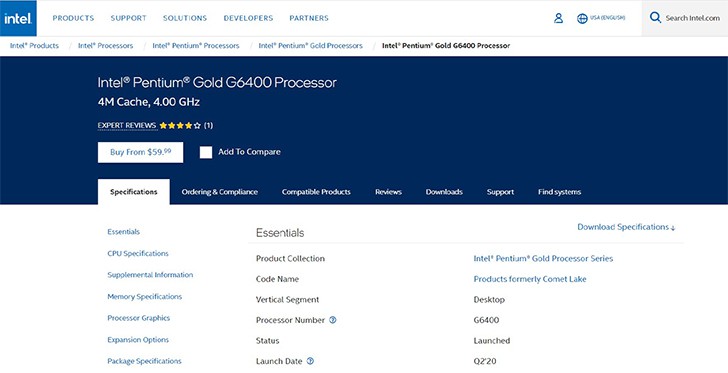
The Pentium Gold G6400 runs at 4 GHz, features a 4 MB L3 cache and is constructed using a 14 nm manufacturing process. The multiplier’s lock constrains the capacity of this CPU for overclocking. The processor also supports dual-channel DDR4 memory. Officially, the highest RAM speed supported is 2666MHz, although this can be increased with the correct modules and overclocking. The processor uses a PCI-Express Gen 3 connection and features a Graphics 610 UHD solution.
With a hash rate of 947.99 H/s on the XMR-RandomX (XMRig) algorithm and a base clock speed of 4.00GHz, BetterHash estimates the G6400 mining and earning capability at over $0.59 each month. This is not profitable, so only use the G6400 with some quality GPUs. The Pentium Gold G6400 has a thermal design power of 58 W, which is fair for modern CPUs. However, some CPUs will use more than the stated TDP without overclocking.
| Term | Intel Pentium Gold G-6400 |
| Cores | 2 |
| Threads | 4 |
| Price | $64 |
10. Intel Celeron G5905
The Intel Celeron G5909 is a low-priced CPU that’s great for mining. The processor comes with two 3.5GHz cores and two threads. The Celeron G5905 includes a 4MB L3 cache and can support up to 2,666MHz DDR4 RAM. The chip can only execute one processing thread across each core at once and cannot increase the clock speed over the 3.5GHz base rate because of a lack of support for TurboBoost and thread-doubling Hyper-Threading. Features include a 610 UHD Intel graphics, a memory size of 128Gb and a memory speed of 41.6GB/s.
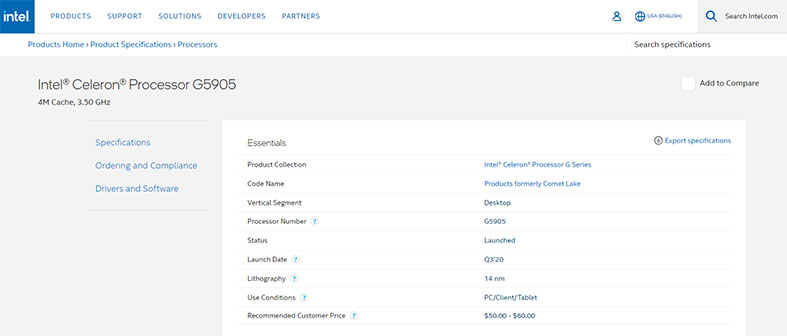
The G5905 CPU has a clock frequency of 3.50GHz, which allows the CPU to generate a low monthly income of over $0.62. The power consumption for the G5905 is 58 watts. The hash rate is 1007.99H/s.
| Term | Intel Celeron G5905 |
| Cores | 2 |
| Threads | 2 |
| Price | $46 |
What To Consider When Buying a CPU for Crypto Mining?
The factors to consider before buying a CPU for mining include.
One of the most significant drawbacks of crypto mining is that mining requires a lot of CPU power, which wastes energy. Finding a CPU with reduced power usage will undoubtedly result in significant long-term cost savings.
Faster clock rates translate into faster hash rates and more money when mining cryptocurrencies. When selecting a processor for mining, look for high GHz values.
A thread splits the number of cores in a process, doubling and causing the cores to run smoother and faster. A processor typically threads twice the base amount of cores, so a four-core processor will produce an average of eight threads, while an eight-core will produce 16 threads.
What Is the Working Logic of CPUs for Mining?

What is mining? Crypto mining is a way of generating new coins and a way to validate crypto transactions. Miners compete to be the first to complete challenging mathematical puzzles once a transaction block has been filled. This is where the CPU comes in, as powerful computers are needed to solve the equations. A more powerful CPU can solve equations faster, resulting in more rewards for the miner. Once the equation is solved, a 64-character hash is produced, validating the transaction and allowing the miners to create Bitcoin, Ethereum or whatever coin is being mined.
Is a CPU Enough for Mining?
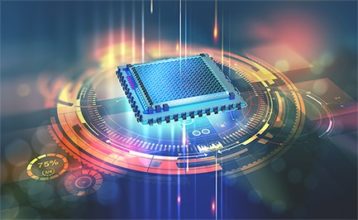
No, a CPU is just one of the items needed to build a mining rig. Other components required to mine include a hard disk, motherboard, graphics card, RAM and a power supply unit.
The mining setup performs better when there’s sufficient storage space. Users mining with a mining pool; can get a hard drive of at least 120GB SSD, but anyone mining independently needs to consider the blockchain size and how fast the volume grows.
The motherboard connects every component on a mining rig, allowing each piece to communicate with one another. The best motherboards can support up to six GPUs for those setting up a GPU mining rig.
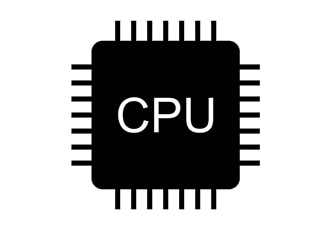
The graphics card or GPU is essential for mining. Several altcoins such as monero and electroneum can be mined with just a CPU. However, to mine ETH, a graphics card is required. When buying a GPU, consider the hash rate (which measures how many calculations can be done per second. A higher hash rate means more mining power) and the energy consumption. Graphics cards today are costly, so always check the best GPUs for mining to get the power consumption and hash rate before buying.
Note:
RAM requirements are not so high for mining. RAM is only necessary for the machine to boot and remain operational while mining. RAM does not significantly impact mining performance.The final component of a rig is the power unit. Different types of PSUs are on the market, which can make buying a power supply unit a confusing task. Calculating the power needed by each component and selecting a PSU that can deliver more energy than the total amount necessary for all parts to work is an excellent rule to follow when choosing the best PSU.
How Much Energy Does the CPU Consume for Mining?
The amount of energy consumed by the CPU mining setup depends on the CPU. The manufacturer usually lists the CPU’s energy consumption, so check the packaging. The energy consumption is measured in watts (W). Other factors affecting energy consumption include the number of cores, clock frequency or clock speed and heat generated.
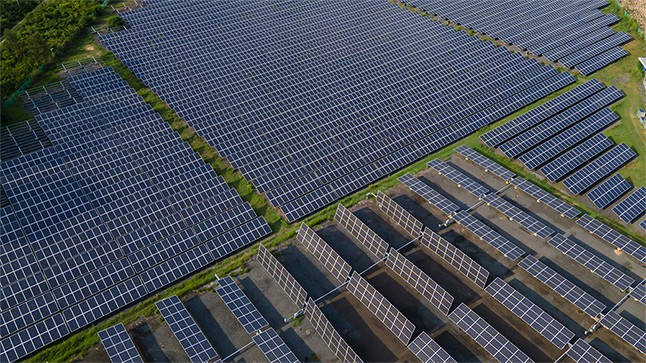
Clock frequency or clock speed is the number of cycles a CPU can complete per second, expressed in GHz. The clock speed establishes the rate at which a CPU can process a sequence of instructions at any particular moment. The higher the clock speed, the more power is consumed. CPU power consumption increases as the square of the clock speed. For the most optimal mining performance, the CPU needs to be run at the lowest clock speeds that still get the job done in the fastest time possible.
The core is the internal processor of the CPU. The core interprets and executes the user’s instructions. All current CPUs have many cores, and each core can perform a separate task simultaneously. This implies that a CPU with more cores can process more instructions. Hence, the more cores a CPU has, the more energy-efficient.
Pro Tip:
When a CPU overheats, the CPU will require more power to carry out the same tasks. So always keep the CPU mining as cool as possible.Does Mining Increase the CPU Temperature?
Mining is a power-intensive process, and as the mining process continues, the CPU consumes more power, raising the temperature and leading to overheating. GPUs usually come with two to three fans and a heat sink to stay cool, but CPUs don’t. To get the best out of the CPU, ensure the temperature stays below 80 degrees celsius.
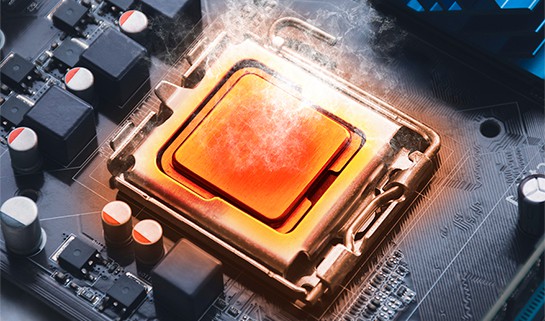
If the temperature exceeds 80, the CPU is at unsafe temperatures, leading to short-term failures and long-term permanent damage.
How Much Can You Save per Day With CPU Mining?
CPU mining can be profitable, but several factors influence profitability. The most important factor influencing profitability is the coin being mined. The best way to make money from mining is to look for coins with a low hash rate.
Should You Pay Taxes for Crypto Mining?
Yes, miners are required to pay taxes for crypto mining. Ethereum, bitcoin and other proof of work cryptocurrencies are taxed in two ways. Tokens received for performing mining activities are taxed under regular income. The tokens are subject to additional taxes, depending on whether the individual is mining as a business or a hobby.

Another taxable event is triggered when the miner sells the tokens for profit (fiat). How much the token price changed since the minting day determines the amount of capital gains or losses. The best crypto tax software can calculate a reasonable price for each coin mined depending on the time and date the user deposited the token to a wallet.

